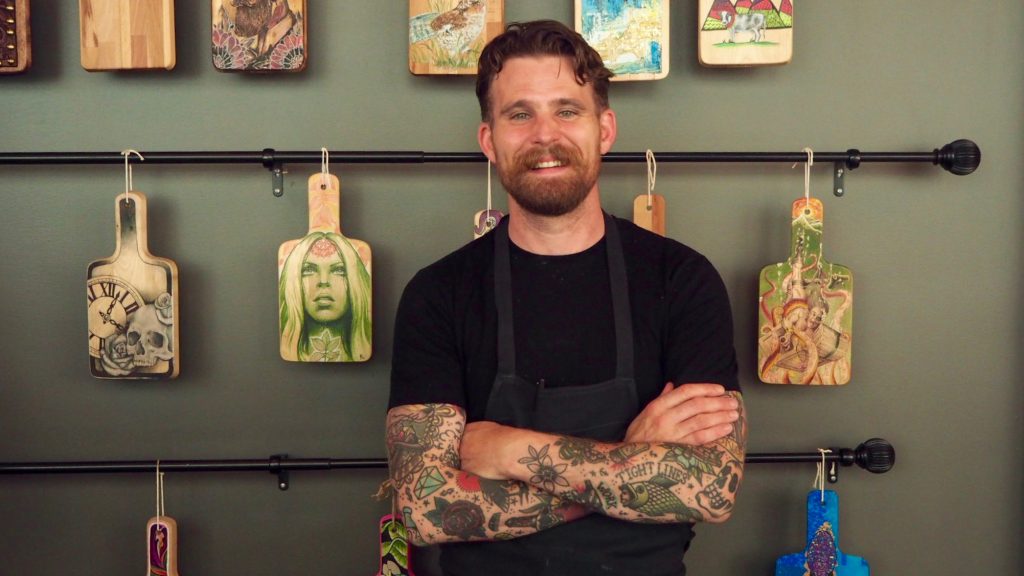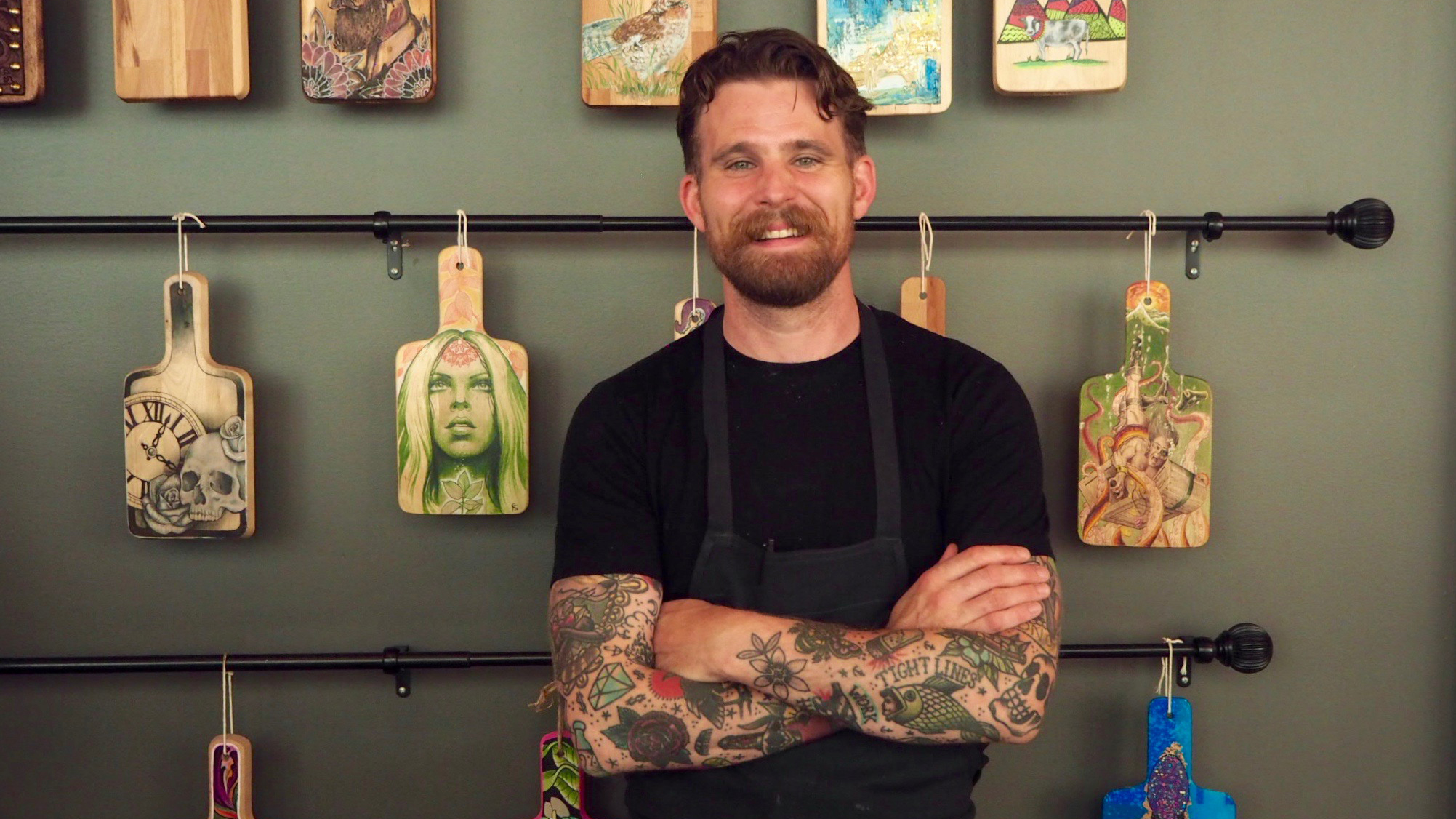Americans regularly cross the northern border to enjoy the diverse scene of Toronto, Montreal’s iconic delicacies and the exquisite sustainable seafood found in Vancouver. But, until recently, Saskatoon, Saskatchewan has remained relatively under the radar as Canada’s newest food destination. And though the city isn’t as easily accessed as those on Canada’s coasts, it is well worth the trip.
Located about six hours north of the Montana border, Saskatoon isn’t the capital of Saskatchewan but, with a population of about 300,000, it is the biggest city in the province. And though its status as a modern food city is a recent development, the region has a rich food history, beginning with the hunter-gatherer lifestyle of its original First Nations settlers and the agricultural tradition later established by 19th century Ukrainian immigrants. Today, grain farming, meat processing and dairy production still make up a majority of the local economy.
But it wasn’t until chef Dale MacKay returned to Saskatoon, his hometown, that all eyes turned toward the city affectionately dubbed “the Paris of the Prairies.” After training with Gordon Ramsay in London, serving as Daniel Boulud’s executive chef and becoming Top Chef Canada’s inaugural winner, MacKay had opened Ensemble, his first solo spot in Vancouver, but soon became disillusioned by the city’s exorbitant ($40,000 a month) rent and disproportionate quality of life. His gaze turned toward his native city, where he’d always detected potential for entrepreneurial growth.
As I traveled as a chef, I always wanted to come back here,” says MacKay. “It was just a matter of deciding when. Saskatchewan has changed so much in the past five years: people have money, farmers are making money, people are traveling more, they expect and want more, and people actually know what local products we’re growing and using here.”

MacKay convinced his right hand men— Jesse Zuber, Nathan Guggenheimer and Christopher Cho— to make the move with him and establish Grassroots Restaurant Group. In 2013, the team opened Ayden Kitchen & Bar, bringing “lake to plate” cuisine to downtown Saskatoon. Last year, Zuber took the helm as executive chef at the intimate Little Grouse on the Prairie, drawing on his experience at the Michelin-starred Guido in Alba, Italy. And just this year, Guggenheimer and Cho took the reigns as chef and beverage director at Sticks and Stones, where ramen and bao are served alongside some of the city’s best cocktails.
“I’ve never in my life seen a more rapidly developing food culture than in Saskatoon,” says Zuber. “When we first got here, the food culture was lacking and still under the influence of chain restaurants, but there was a big population looking for a little bit more. Young professionals and young families are looking to put down roots and go through the same experience they had in bigger cities.”
Saskatoon diners can now enjoy elevated cuisine without the lofty price tags and pretension—and the city’s affordability and room for creativity (not to mention actual physical space) continues to attract more like-minded entrepreneurs each year.
After living in Montreal and Vancouver, Bryn Rawlyk moved back to Saskatoon with his family to open The Night Oven, Saskatoon’s first bakery to use the native grains, grains that have fueled the city’s economy for so many years. He mills all his flour in-house and bakes his bread and pastries in a 9-foot wood-fired oven he built himself. He also just launched Venn Coffee Roasters, a Nordic-style coffeehouse with a speakeasy-style, back alley entrance.
Chefs Christie Peters and Kyle Michael cooked in renowned kitchens like Coi in San Francisco and De Kas in Amsterdam before returning to Saskatoon to open The Hollows, a fine dining restaurant set in a former Chinese restaurant. In addition to repurposing much of the former decor, they run a vintage shop upstairs, compost to near zero waste and donate broken glass to a local glass artist. At both The Hollows and their second concept, Primal, they grow much of their own produce in a basement garden, utilize Saskatchewan heritage grains and take whole animal butchery a step further by tanning hides and making soap from excess fat.
The chef duo’s restaurants are both in Riversdale, one of the city’s liveliest and fastest growing neighborhoods for dining, shopping and entertainment. Here, The Odd Couple serves Asian-Canadian cuisine to a full house for lunch and dinner, while the brand new Hometown Diner became a fast favorite for comforting classics this summer. Nine Mile Legacy, one of the city’s six local breweries, just opened its first tap room. And Drift Café, a self-described “prairie surf cafe” and multi-level community hub, is constantly expanding its sprawl, with a hammock grove, space for live music, private outdoor dining, gardens and a rooftop patio.
And things don’t seem to be slowing down anytime soon. At the start of this year, The Local Kitchen launched, becoming Saskatoon’s first food business incubator, offering three commissary kitchens for rent, workshops and classes, and support for small food businesses.
“I’m so glad we got here when we did, because to come here now would be intimidating because there’s so much talent here now that hadn’t had a chance to shine,” says Zuber. “I have such vested confidence in where this city is going. Saskatoon, as a second home, is second to none.”
(C) Food & Wine

